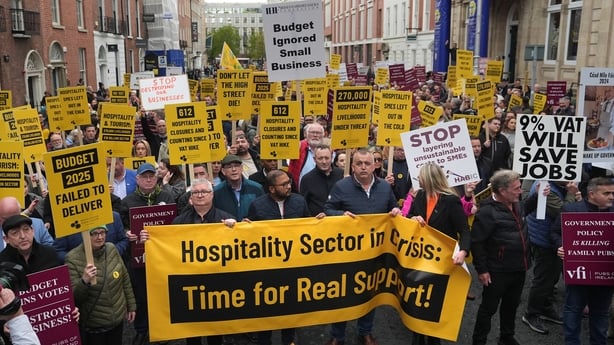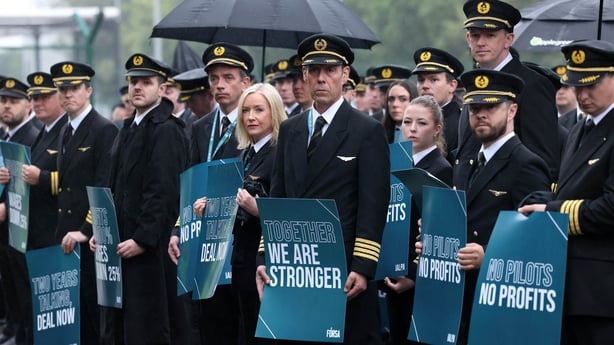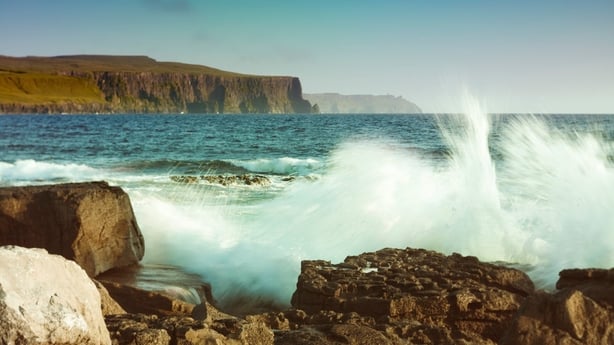What was on the menu for the hospitality and tourism sector in 2024?
A very difficult year.
It served up hundreds of restaurant closures.
Restaurateurs had a lot on their plates this year, including rising food and labour costs which put their margins under serious pressure.
The key ingredient of the tough year was the VAT rate of 13.5%.
The sector mounted a strong campaign in the lead up to Budget 2025 to petition politicians to reduce the rate to 9%.
It proved fruitless, however, and the VAT rate remained the same.

The budget was also viewed as a disappointing one for tourism, mainly because of the VAT rate, with calls on the next Government to increase political and economic attention on the issues facing the sector.
Data from Fáilte Ireland shows that 64% of tourism and hospitality businesses expect profitability to be down on 2023.
International visitors spent less time in Ireland this year, but they spent more money while they were here.
The crucial summer tourism season was a disappointing one for more than half of operators here.
53% of those industry providers had fewer customers this summer than last, with 23% reporting similar levels and 24% recording more.
The data from the national tourism development authority also found that visitor volumes are down in all markets and in all regions of Ireland.
North America was the most valuable market, with visitor numbers up and the length of overnight stays also higher, according to the most recent figures from the Irish Tourism Industry Confederation.
While the North American market was strong, other key sources of business - from Britain to Europe to the domestic market - were soft.
The tourism and hospitality sector is labour-intensive and it has had costs heaped on it in recent times.
In fact, the cost increases on SME businesses, particularly in the tourism and hospitality sector, have been unprecedented.
Labour costs alone have jumped sharply and much of the rise is a result of policies introduced by the Government.
The raft of measures that came into effect this year - including the move to a living wage, enhanced sick pay, and pension auto-enrolment - is set to add hundreds of millions to the payroll of tourism and hospitality businesses.
To help with increasing costs, almost €400 million was paid to SMEs under the Power Up grant and the Increased Cost of Business Scheme this year.
The schemes were designed by the Department of Enterprise, Trade and Employment and administered by the Local Authorities with the aim of helping businesses with the increased costs associated with running a business.
While there were clouds over tourism, there are also bright spots on the horizon with the expansion of direct flight routes, especially from the United States.
Throughout the year, airlines announced new routes, including Ryanair flights from Cork to Brussels and Rome, and extra flights on its 17 routes from Shannon, as well as direct routes with Aer Lingus to Nashville, Tennessee and Indianapolis, Indiana, as well as Cleveland, Ohio.
In June, a pilots' pay dispute with Aer Lingus led to a work to rule and strike that hit the airline's operations and the travelling public.
It cost the airline more than two days’ worth of flights at its busiest time of year, and while there were fears it would affect tourism, passengers were accommodated through rebookings on other carriers.

The story that dominated aviation in 2024, however, was the passenger cap in Dublin Airport.
Introduced in 2007, the passenger cap limits the number of passengers who can pass through Dublin Airport in a given year.
It was set at 32 million per year and it has not changed since.
At the time, it seemed a relatively reasonable number, as it was well above the 23 million people who passed through Dublin Airport in 2007.
It became a massive source of contention during the year, as passenger numbers climbed, with worries that it could affect tourism numbers to the country.
One of its most vocal critics is Ryanair boss, Michael O'Leary, who said daa should ignore the passenger limit.
"It’s entirely arbitrary, it is to do with surface access at Dublin Airport and what are Fingal going to do? Stop the planes flying?" he asked.
Based on forecasts for December, daa continued to warn that passenger numbers through its terminals will exceed 32 million and will be over 33 million for the full year 2024.
Kenny Jacobs, CEO of daa, said, "The importance of resolving the cap issue was highlighted by the main parties in the recent general election and we look forward to working with the new government on the issue."

When tourists visit Ireland, they are keen to visit the West of Ireland and the Wild Atlantic Way. This year marks a decade since the launch of the Wild Atlantic Way, an initiative that turned Ireland's western coastline into a globally recognised destination.
Spanning across 2,500 kilometres, the route has drawn millions of visitors to its landscapes and provided a vital boost to local communities and businesses.
Fáilte Ireland published a report to mark the route's tenth anniversary which showed the Wild Atlantic Way is worth €3 billion a year in tourism revenues.
It was launched as a tourism-focused response to the financial crash, and Fáilte Ireland said the scenic route has become "an economic engine for the west".
As Ireland’s largest indigenous employer, the sector says the long-term sustainable development of tourism and hospitality is vital for the country’s economic well-being, supporting over 270,000 livelihoods.
Given the enormous challenges facing the industry, it is calling for an urgent change in direction from the next government to put the sector on a more stable footing.







